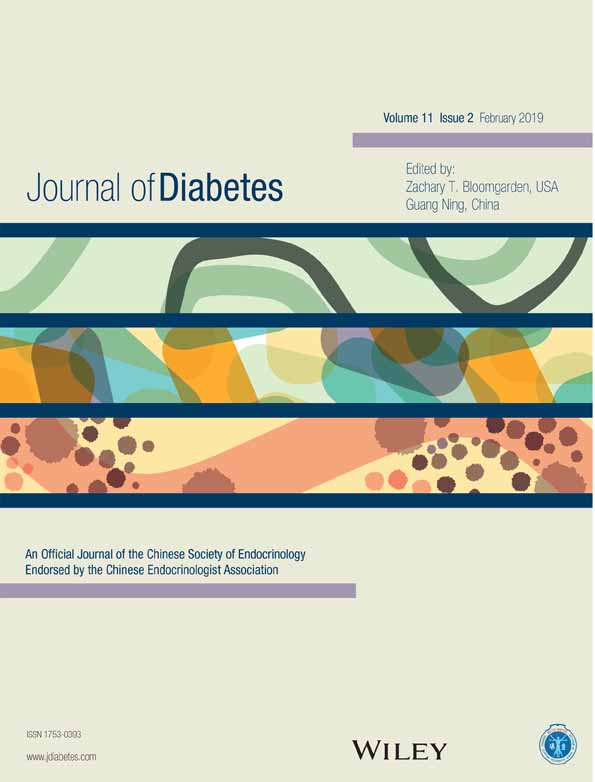Risk factors for developing diabetes after 3 years among community-dwelling elderly with impaired fasting glucose
空腹血糖受损的社区老年人群三年后发生糖尿病的危险因素
Abstract
enBackground
The aim of the present study was to examine the risk factors for developing diabetes after 3 years in an elderly Chinese suburban population with impaired fasting glucose (IFG).
Methods
The study population comprised residents of the Hangu area of Tianjin, China, with IFG, aged ≥60 years, who joined the national free physical examination program (n = 328; mean [±SD] age 68.0 ±6.1 years; 48.2% men). Diabetes was defined by self-report of a physician's diagnosis or fasting plasma glucose (FPG) ≥7.0 mmol/L; IFG was defined as FPG ≥5.6 and < 7.0 mmol/L. Risk factors of incident diabetes at the 3-year follow-up were analyzed individually using logistic regression analysis.
Results
Between baseline and the 3-year follow-up, 56 subjects with IFG at baseline had developed diabetes. After multivariate adjustment for demographic and clinical factors, the incidence of diabetes increased with higher FPG (odds ratio [OR] 9.30, 95% confidence interval [CI] 2.84–30.48), but decreased with the grip strength/weight ratio (OR 0.88, 95% CI 0.82–0.94). Moreover, the combination of higher FPG and lower grip strength/weight was associated with a higher incidence of diabetes than higher FPG only or lower grip strength/weight (P < 0.05).
Conclusion
The present study indicates that higher FPG and lower muscle strength are associated with glycemic deterioration among subjects with IFG after 3 years. The results suggest that not only glucose levels, but also physical performance may be useful markers of the risk of diabetes in this population.
Abstract
zh摘要
背景
本研究旨在探讨空腹血糖受损(IFG)的郊区老年人群3年后发展为糖尿病的危险因素。
方法
本研究针对天津市汉沽区参加全国免费健康体检项目的住户, 选取空腹血糖受损的老年人群作为受试者(n = 328, 平均年龄68.0±6.1岁,48.2%为男性)。我们将空腹血糖(FPG)≧5.6且< 7.0mmol/L的受试者定义为IFG;将自我报告已被医生确诊或空腹血糖≧7.0mmol/L的受试者定义为患有糖尿病。通过3年的跟踪调查结果, 运用logistics回归分析, 研究糖尿病发生的危险因素。
结果
将基线数据与3年后数据进行对比, 发现有56名患者从IFG发展成为糖尿病。校正人口统计学和临床因素后, 我们发现老年IFG人群糖尿病的发生与FPG水平较高(OR 9.30,95% CI 2.84-30.48)相关, 但与握力体重指数(握力/体重)较低有关(OR 0.88,95% CI 0.82-0.94)。此外,FPG水平较高且握力/体重指数较低的人群, 其发生糖尿病的风险较单纯FPG水平高或单纯握力/体重指数低的人群更大(P < 0.05)。
结论
本研究表明,FPG水平较高和肌肉力量较弱与老年IFG人群3年后血糖进一步恶化有关。此结果提醒我们, 老年IFG人群患糖尿病风险的指标不仅包括血糖的变化, 也应关注体力表现的能力。




